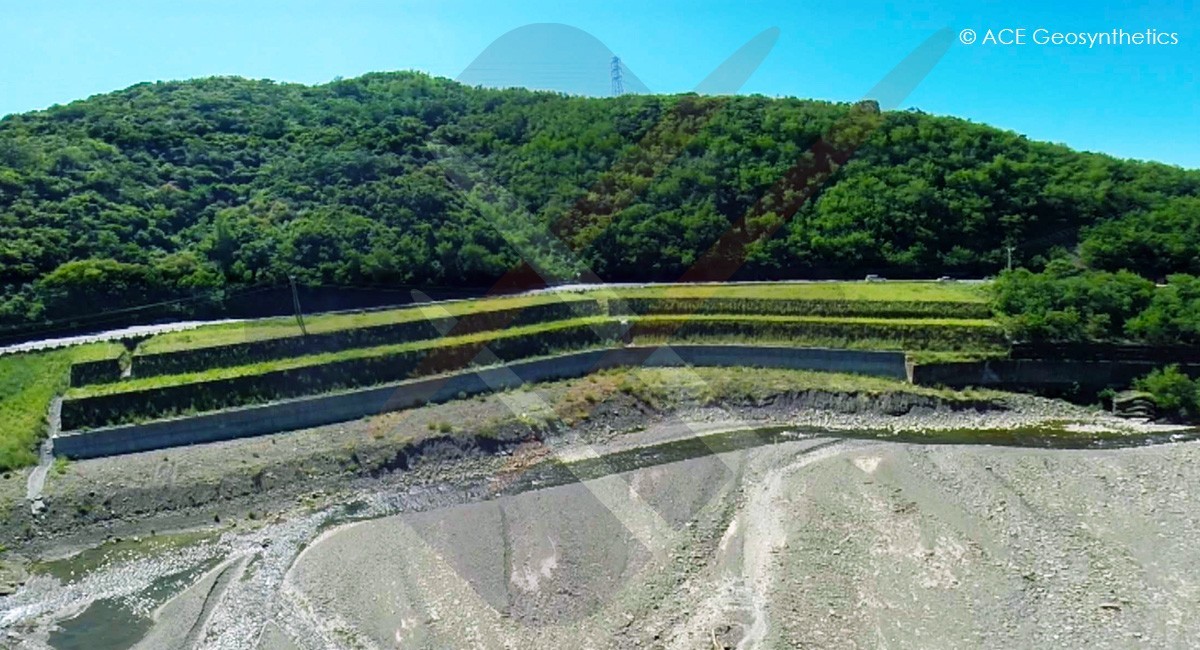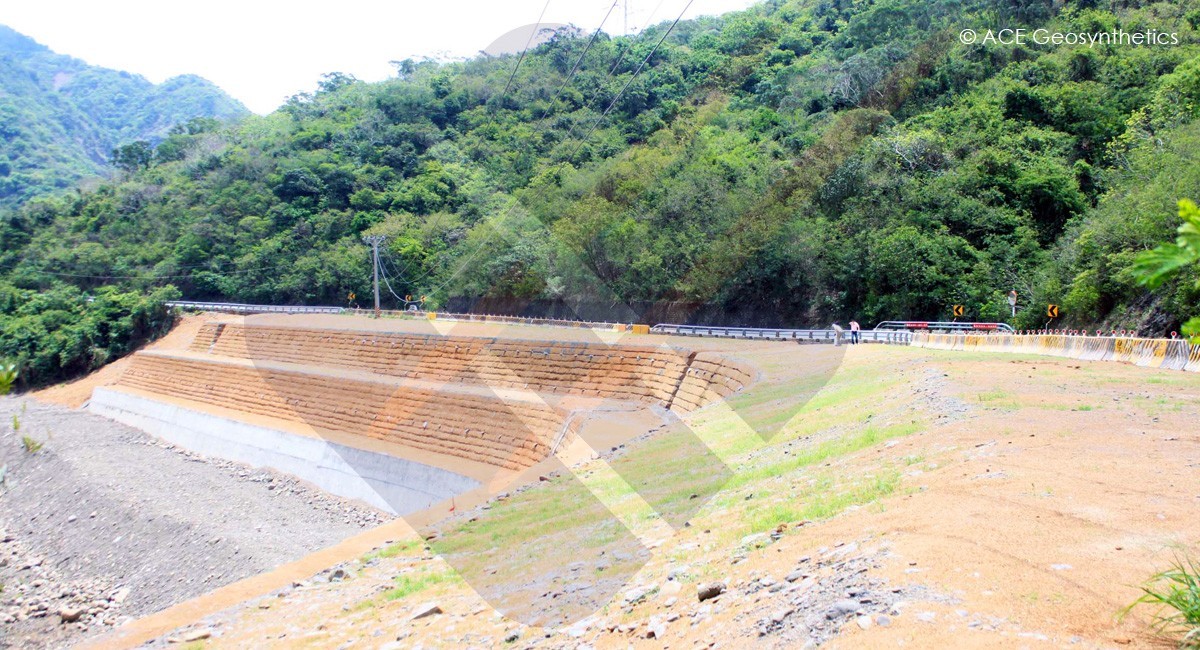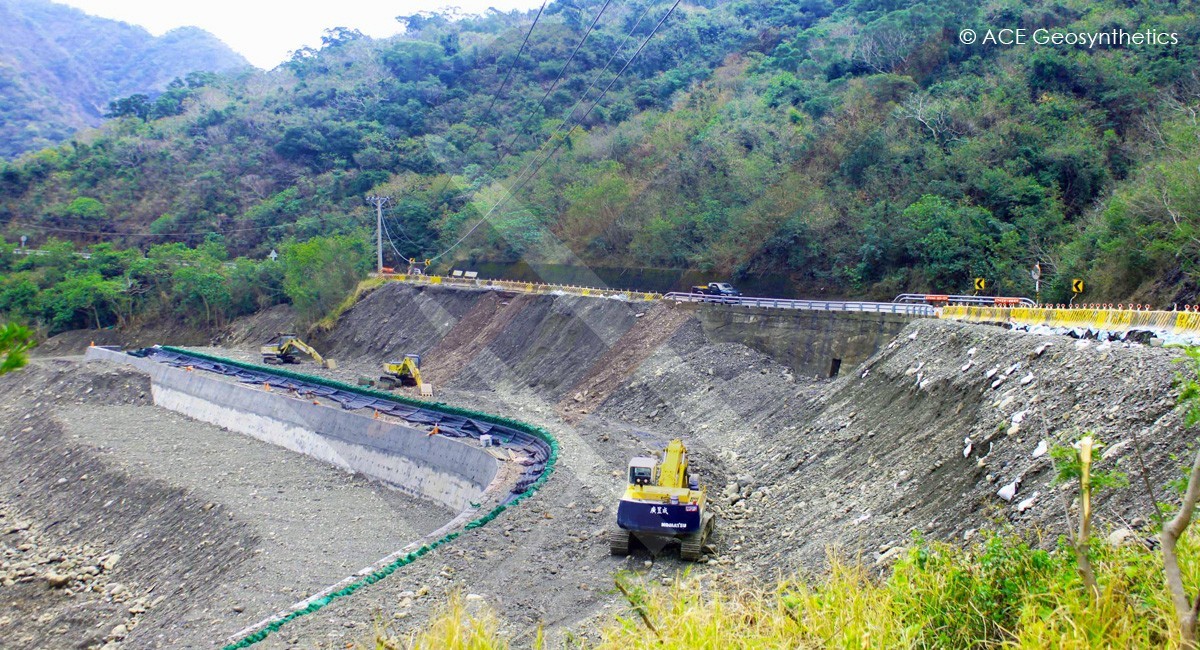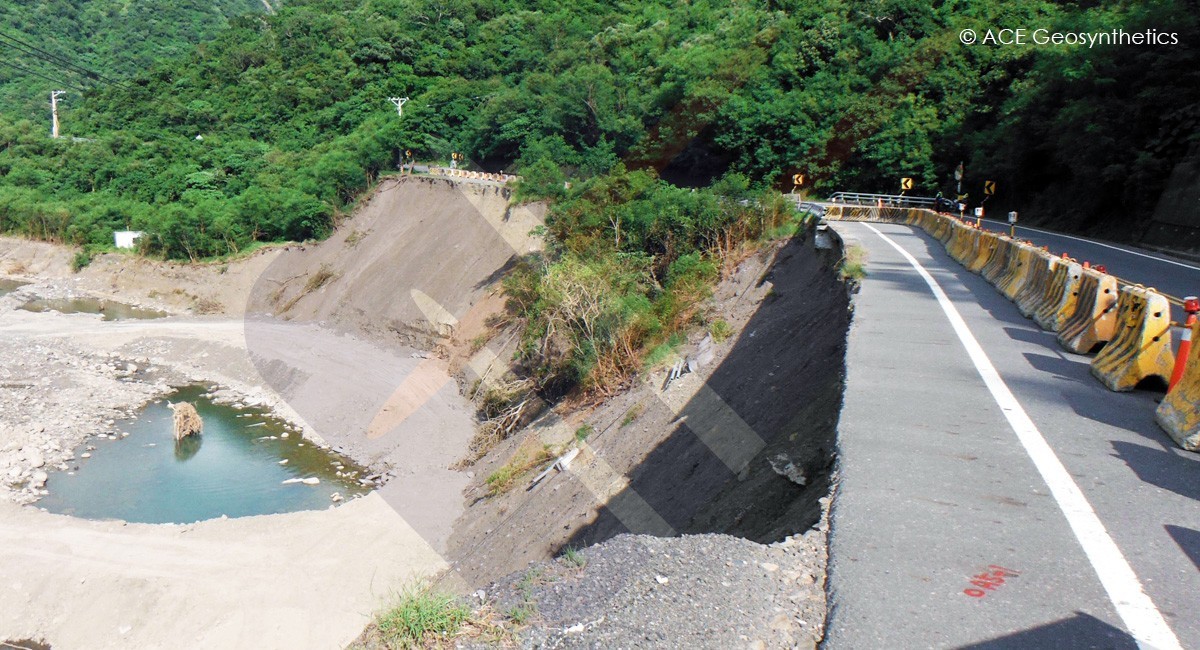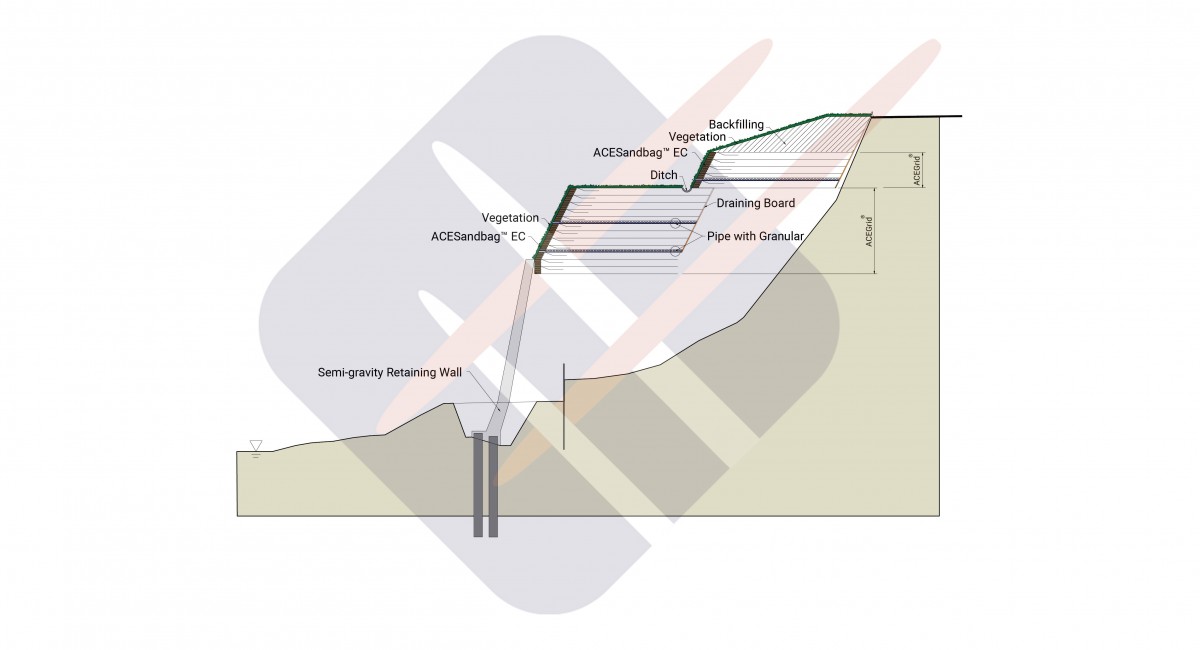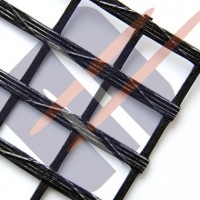Taiwan | 2010-2014
Slope Rehabilitation, Tai-Route 9, Pingtung, Taiwan
Products:ACEGrid® GG
Application: Slope Stabilization
-
Background
-
Tai-Route 9 is the most important arteries in connecting Pingtung County and Taitung County. It has world-famous natural scenery along the line in southern Taiwan. In August 2013, Typhoon Kongrey hit the island with heavy rainfall and caused numerous infrastructure damages in these areas. The project reported herein located at Sta. 470k+500 of Tai-Route 9 where its downslope was totally collapsed due to the riverbank breach which was smashed by the rushing flooding of the adjacent Fenggang River. The in-situ drainage system also insufficient to accommodate the enormous overflow came from the upper land of the site. The highway was completely disrupted and the rehabilitation was immediately necessary to resume the normal livelihood of residents and minimize the loss of local tourism productions.
-
Problem / Task
-
The depth of the slope was over 20 m and the toe was vulnerable by the attack of the adjacent river. There were tons of rubbles on site because of the collapsed debris and the highway managing authority required the rehabilitation should be a sustainable solution. It must use up these materials as much as possible and also the final completed structure should be durable, aesthetic, and eco-friendly. In addition, the owner also required the construction must be completed within a limited schedule.
-
Solution/ Design & Construction
-
The conventional solution is to build a staged cast-in-place retaining wall and then backfilled in layers with qualified imported materials to the height of the original pavement. Pile foundations also must be used to support the structure so that it can stand firmly on the steep slope and provide sufficient protection for river scouring. Such design was costly and took longer time to complete. The appearance of concrete structure also was not favorable for the site.
ACE Geosynthetics provided an innovative solution to meet all the requirements of the slope rehabilitation project. Firstly, a 150m long, pile-supported reinforced concrete (RC) waterfront protection wall was built for the lower slope below the highest water level. The piles were designed with a diameter of 1.2m and a minimum length of 10m. A total of 155 piles, each spaced 2m, were installed in two rows with all-casing drilling technology and seated into the bedrock for at least 2 m. The durable RC structure was used to prevent the instability from river scouring.
Secondly, a wrap-around reinforced earth structure (RES) containing ACEGrid® geogrid, sandbags, and drainage materials were chosen to restore the upper slope. The RES was constructed in two stages using collapsed debris piled on-site. Each stage has a height of about 5 m with an averaged inclined ratio of 1:2 (H:V) so that a sufficient width of the highway can be maintained. Considering the safety and the cost, two types of geogrid were used. The lower part of the RES applied stronger ACEGrid® GG150-I (Type A geogrid) as the reinforcing material for a total area of 1,326 m2. Another 995 m2 of ACEGrid® GG100-I (Type B geogrid) with lesser strength was used for the upper part of the RES. Each layer of the fill material was installed with a vertical spacing of 50 cm.
To prevent the surface overflow washing and softening the RES, a 2 m X 2 m approximately, drainage culvert was installed below pavement to collect all the possible surface run-off and discharged it directly to the river. Stacked soil-filled sandbags were used for slope face protection. It also functioned as the medium of planting as vegetated slope was not only good for an aesthetic appearance but also for an eco-friendly environment. -
Result
-
After four months of construction, this project was completed in May 2014. Since then it has been through a number of typhoons attacks and by far still remaining in good condition. Although it has always experienced heavy traffic, no evidence has been observed for deterioration or instability. Vegetated slope presents natural appearance and provides an aesthetic and eco-friendly environment for the site. As many other similar projects already in use, the rehabilitation has been proved successful.
Taiwan is world-famous in its natural scenery but it also has experienced numerous record-breaking natural disasters. For such a beautiful but vulnerable environment, man-made structures should be built as much as possible to satisfy the requirements of durable, aesthetic, sustainable, eco-friendly, and seismic-resistant. The project reported herein proved ACEGrid® RES system to be the novel solution to totally meet the demand of the country.
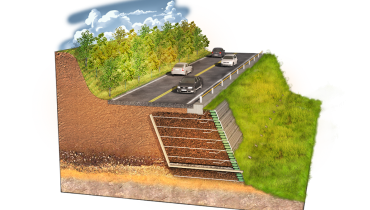
Slope Stabilization
Slope Stabilization Using Retaining Wall Geogrid ACE provides geosynthetic solutions that reinforce slopes and prevent erosion. The angle of repose is a cr...
Related Products
Similar Case Studies
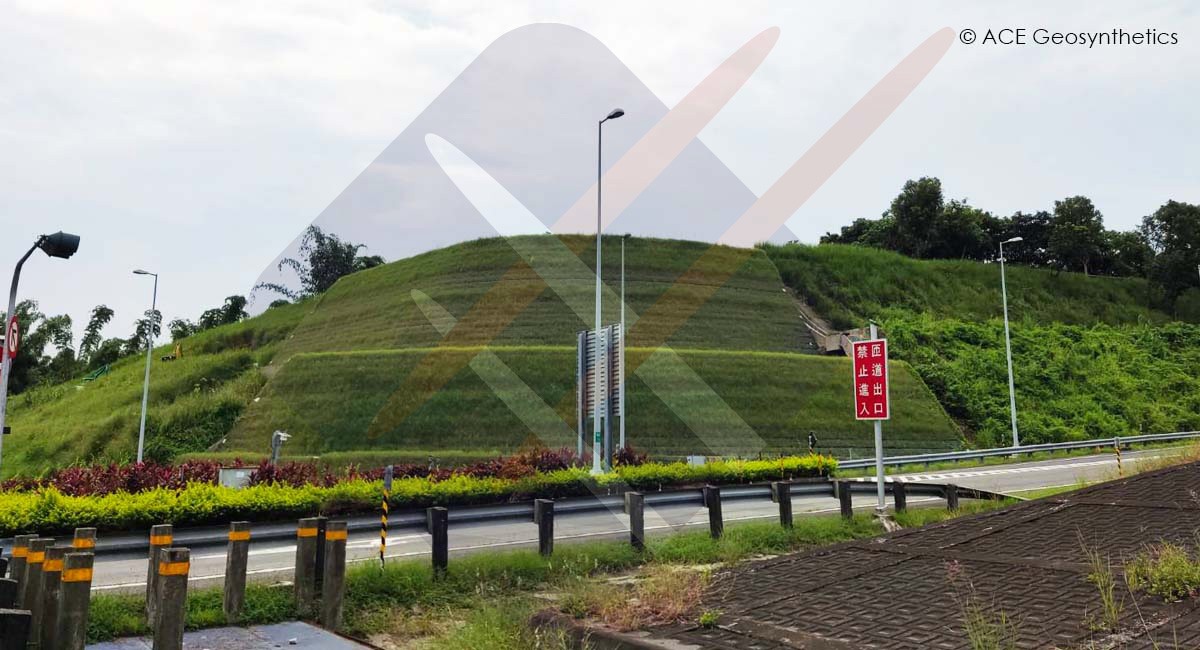
Reinforced Earth Slope, Tianliao Interchange, National Freeway No. 3, Taiwan
Application:Slope Stabilization
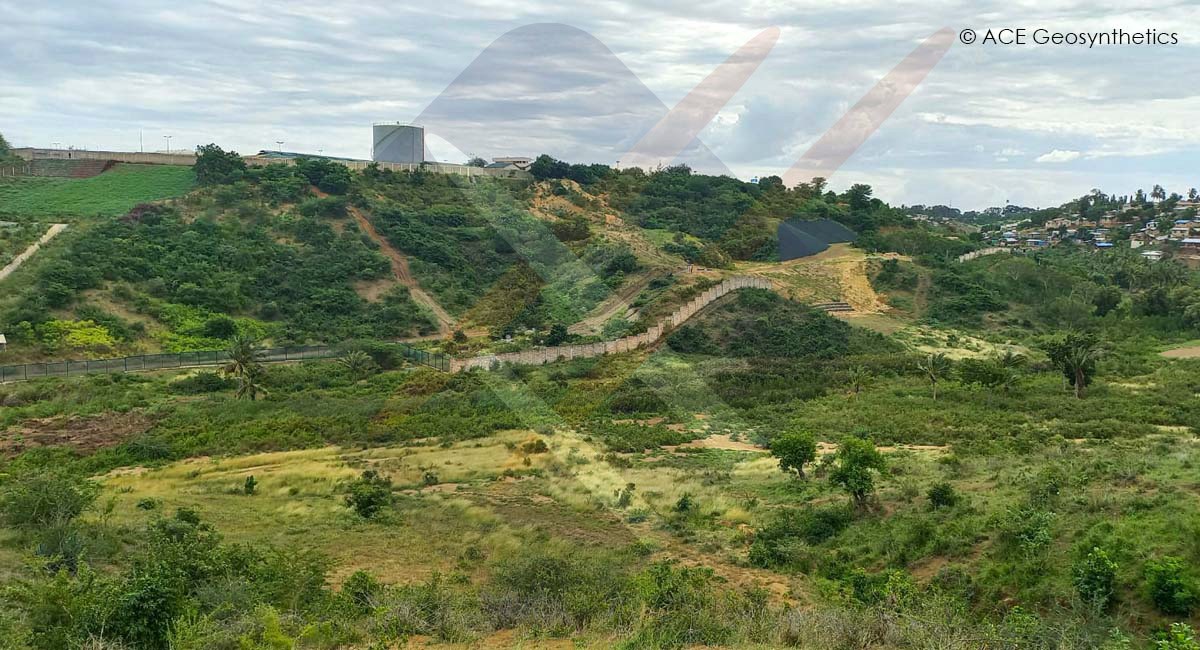
Use of Reinforced Soil to Restore an Eroded Slope in Africa
Application:Slope Stabilization, Slope Erosion Control
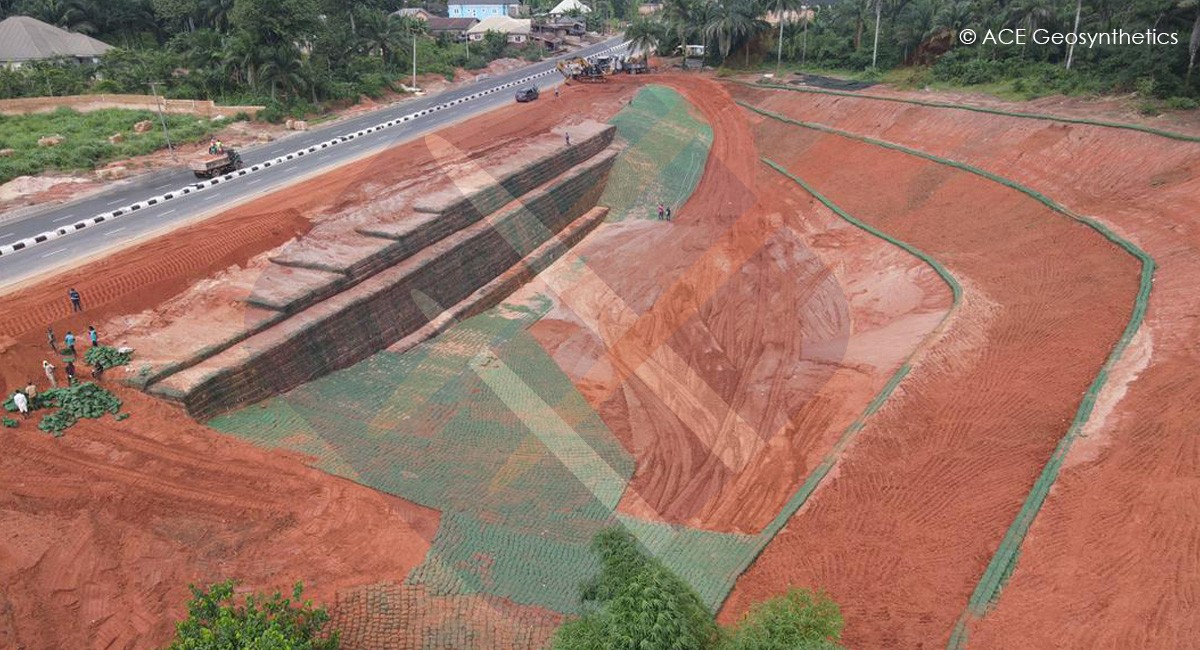
Road Widening and Slope Restoration with Geosynthetic Reinforced Soil Slope, Nigeria
Application:Slope Stabilization, Road Widening
